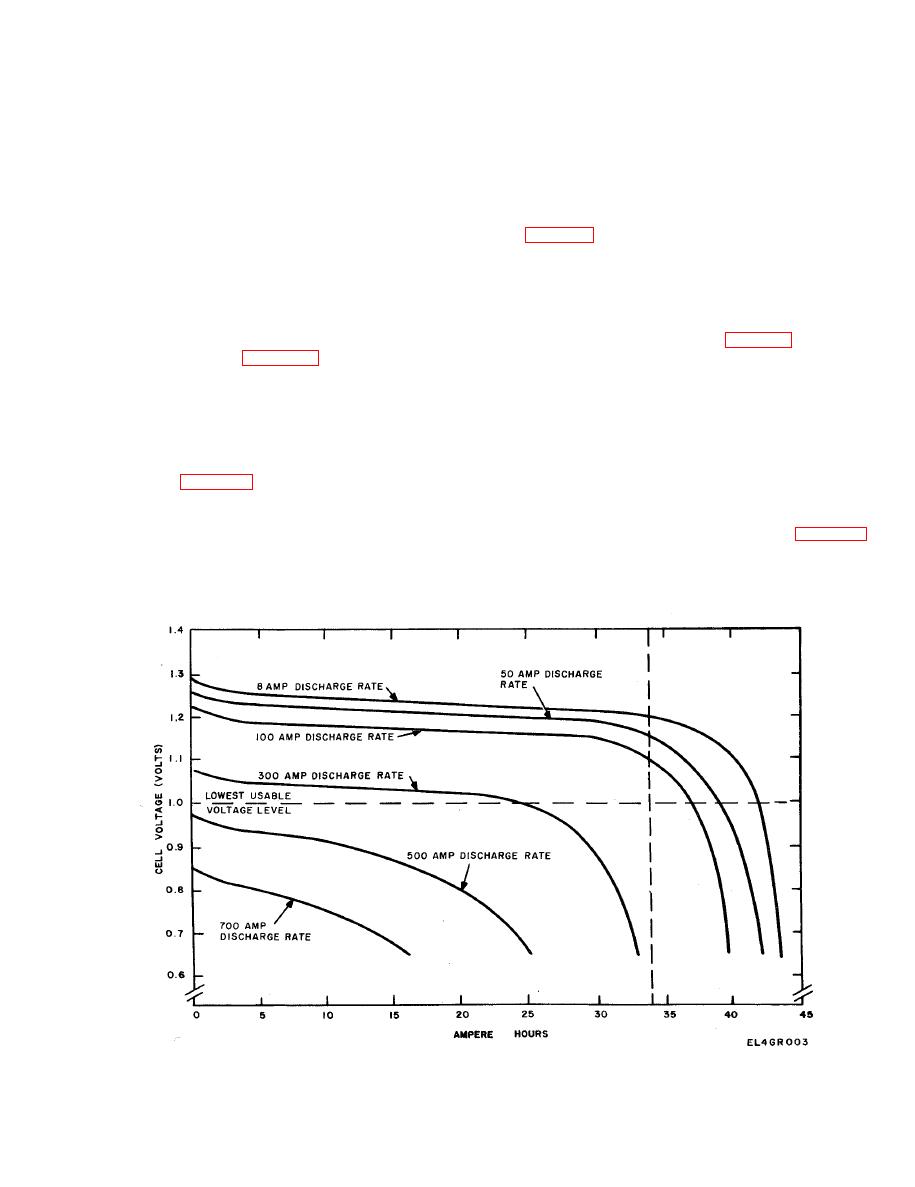
TM 116140203141
(1) Aircraft batteries. The actual capacity ob-
ity has dropped to approximately 24 ampere-hours,
tained from aircraft type batteries after a full charge
which is approximately a 20 percent reduction over
normally exceeds the rated capacity by 25 to 40 per-
the rated capacity of 30 ampere-hours. As the current
cent. When the actual capacity falls below rated
demand is increased to 500 amperes, the cell can no
longer deliver usable current for noncranking load be-
capacity, the battery is considered unacceptable.
cause the cell voltage has dropped below the minimum
(2) Nonaircraft batteries. The actual capacity ob-
acceptable level. However, for engine cranking loads,
tained from new communication type batteries after a
cell voltages as low as 0.6V are acceptable. The curves
full charge normally exceeds the rated capacity by 15
of figure 2-3 show that the aircraft type cells are capa-
to 30 percent. Actual capacity falls with cycling, and
ble of sustained current drains up to 10 times their rat-
when it reaches 60 percent of rated capacity after
ed capacity before the voltage level drops below 1.0
many hundreds of cycles it is considered unacceptable.
volt. Nonaircraft type cells are usually designed for
lower rate applications and therefore will be limited to
approximately one-half the current levels of the high-
a. Discharge Rate. The nickel-cadmium battery is
rate aircraft type cells. Curve A of figure 2-3 is a typi-
capable of delivering very high discharge currents
relative to its size. Figure 2-2 shows the capacity and
cal discharge curve for a 19-cell aircraft battery dis-
charged at the one and two hour rates.
voltage obtained during discharges of a 30 ampere-
b. Discharge Temperature. Nickel-cadmium cells
hour aircraft type cell over a wide range of discharge
are capable of sustaining high current drains and good
rates at normal temperature. The lowest usable volt-
performance at temperatures as low as 0F. However,
age for proper cell operation in noncranking applica-
sustained high current at temperatures below 0F will
tions is considered to be approximately 1.0 volt
result in a reduced cell performance because the in-
(equivalent to 19 volts for a 19-cell battery). The
creased internal resistance of the cell lowers the closed
curves in figure 2-3 show that an increase in current
circuit voltage. The effective capacity of a cell will de-
demand from 8 amperes to 100 amperes will only
crease when it is subjected to high current demands
slightly decrease the capacity output of the storage
and extreme temperatures. This is shown in figure 2-4
battery. However, the individual cells are still capable
where battery capacity and voltage is compared at the
of delivering current in excess of their rated ampere-
5-minute rate at 80F and 22F. The preferred oper-
hour capacity. As the current demand is increased to
ating temperature for typical vented nickel-cadmium
300 amperes, the cells are degraded until their capac-
Figure 2-3. Effects of Discharge Rates on Capacity of a 24-Volt, 30-Ampere-Hour Nickel-Cadmium Battery.

